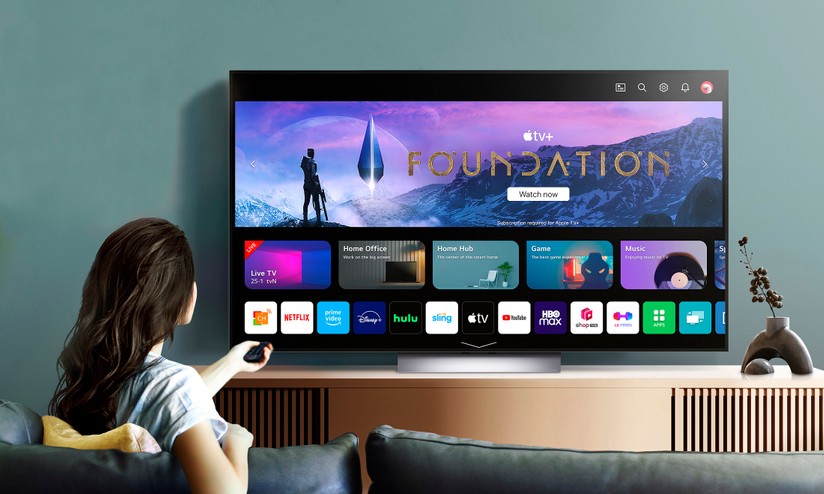In a press event, the giant LG provided more details on the OLED TV models that will hit the market in 2023.
Just under two months from CES in Las Vegas, LG back in the spotlight with a presentation reserved for the press where he illustrated in more detail all products that will arrive on the European market in 2023, emphasizing the outstanding novelties that will be equipped on the TVs of the South Korean giant. Compared to the American event, in which we were able to know only superficially the range of models planned for this year, we can now finally analyze with more precision the progress made for the panels, the brightness and the operating systems that we will find in the latest generation screens.
In this presentation, the Seoul-based company clarified all the new models, for now still without complete technical specifications, but which will be revealed in the coming months as we approach the release dates in the official shops and stores. Waiting to be able to try them first hand and actually discover all the details, in this article you will find all the related news LG’s 2023 OLED TV line-up coming from the event, also the scene of jabs and comparisons towards other manufacturers, in particular the fiercest competitor Samsung.
Full range
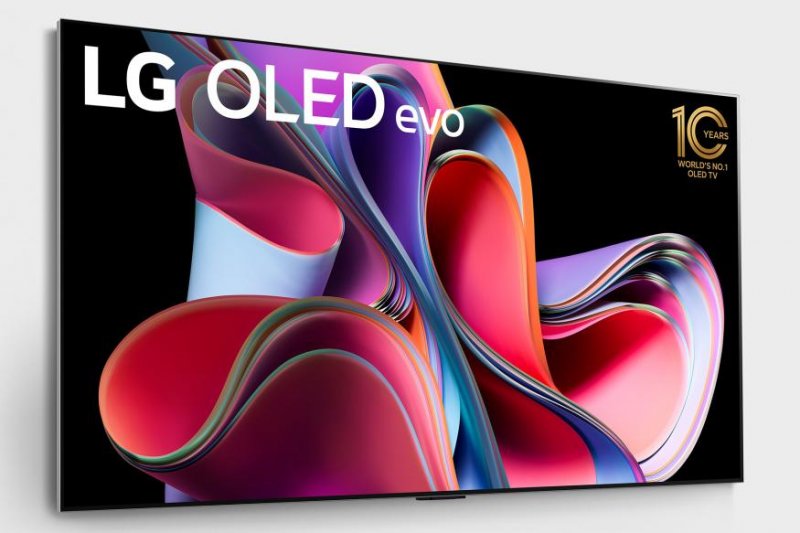
Thanks to this event we have the confirmation of what was presented during the CES in Las Vegas, without particular surprises on the maintenance of all the 2022 series, with the exception of theabsence of gamma A which represented the entry-level range of current LG TVs. For the 2023 line-up, in fact, we start directly from the B series, which obviously becomes B3with cuts 55, 65 and 77 inchpanel from 120 Hz and processor Alpha7 AI Gen6. This series also maintains support for HDR and Dolby Vision and will have 4 HDMI ports, two of which are 48 Gbps 2.1 and the remaining 2.0. The cheapest range will hit the market in April with list prices starting at €1899 for the 55”, €2799 for the 65” and €4499 for the 77”.
The most anticipated series is undoubtedly the C3, on the strength of the favor found for the C1 and C2 models which have achieved enormous success on the market and which currently remain among the best products in terms of quality and sales price. The LG C3 with technology OLED evo has an Alpha9 AI Gen6 processor and will be available in 42 and 48-inch sizes, which will have limited lighting, while the 55, 65, 77 and 83-inch models will be able to count on the technology Brightness Booster (indicating the use of OLED EX panels). All models will be equipped with Dolby Vision up to 120 Hz and 4 HDMI 2.1 ports at 48 Gbps. The C3 range will debut between March and May of this year with prices of €1699 and €1799 for the 42 and 48-inch variants, while the larger panels are priced at €2499 for the 55”, €3299 for the 65”, €5299 for the 77” and finally €7299 for the 83”.
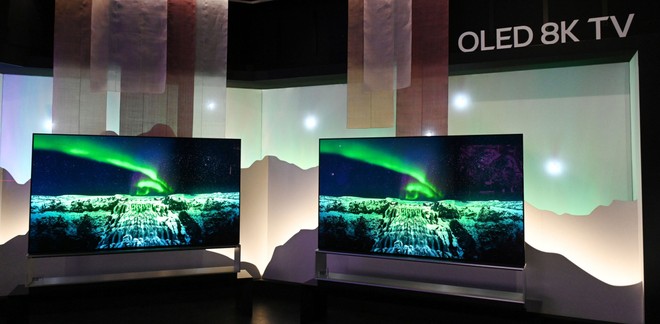
The G3 series represents once again the “enhanced” version of the Cboth in price and in the characteristics of the panel, will boast the Brightness Booster Max and will be available in 55, 65, 77 and 83 inch sizes. With the technology just mentioned, the G series achieves a peak HDR luminance of just over 2000 nit, while as far as connectivity is concerned, it remains the same as the C series, also integrating all the patents relating to gaming: HDR10, HLG and Dolby Vision and refresh rate up to 120 Hz, VRR also in AMD FreeSync Pro and Nvidia G-formats Sync. All models will be available in March and the respective prices are €2799 for the 55-inch version, €3999 for the 65”, €6299 for the 77-inch version and finally €8699 for the 83” version.
The Z3 series with OLED evo 8K technology completes the range and available in 77- and 88-inch cuts. LG declares that although this model boasts panels WOLED with MLA microlenses, the maximum achievable luminance peak is lower than the G series, stopping at 1350 nits in HDR in “Dynamic” mode. The selling price of these two models will be €14,999 and €29,999, the first arriving in March and the second in May.
New technologies
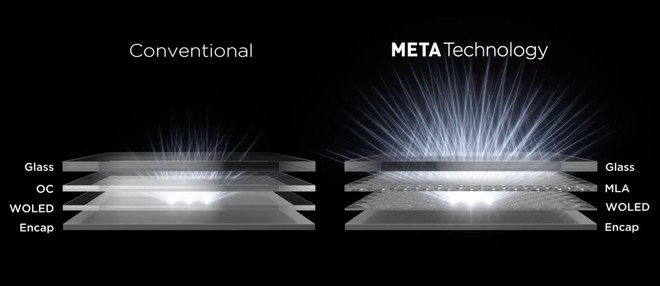
As mentioned in the description of the models, one of the most evident improvements made by LG lies in having further and substantially increased the brightness of its panels thanks to the technology Brigthness Booster Max. As for the G3, the manufacturer claims to have reached and exceeded 2000 cd/m2 peak luminance in dynamic mode and with native white point on a 3% window, and to reach over 1400 cd/m2 in calibrated mode , up to 10% screen coverage. In practical terms, the improvement stands at 70% more general lighting than that obtainable with the B3.
Great attention was paid to the processor α9 Gen6 con AI, designed to make the most of OLED technology, thanks to Deep Learning. To achieve a further optimized yield there is the function AI Picture Proimplemented to offer an upscaling with a better resolution of the original image.
A further gem reserved for the G series is the anti-reflection coating of the screen which will offer a reduction of reflected light up to 25% more than the C2. However, lighting management does not pass only through updated panels but also through the new sixth generation Alpha 9 processor which manages all the algorithms involving brightness improvements, obtainable through artificial intelligence and HDR. In the latter case, thanks to theHDR Expression Enhacerthe new G series is able to analyze the individual figures on the screen and optimize their performance and perceived three-dimensionality.
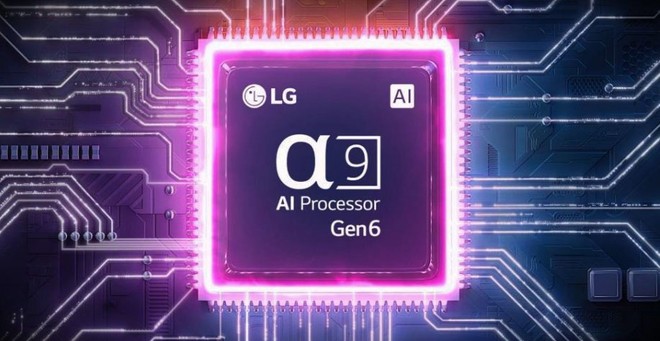
The new processor also affects audio processing, which from this generation can recreate 9.1.2 channel audio. Added to this AI Clear Sound which allows an acoustic calibration based on the environment in which the TV is located, thus generating personalized and optimized audio profiles. If, on the other hand, you usually use a soundbar, obviously from the same brand, you can count on the WOW Orchestra function, which simplifies association through the TV settings and adjusts frequencies and functions.
The improvements with this new range are also seen at the webOS level, now in version 23, now lighter and more simplified in the interface to ensure easier and more intuitive navigation. The Home, with this new improvement, it can be grouped into tabs, thus facilitating the scrolling of the contents and immediately finding what we want to reproduce. In addition there is the possibility of creating real profiles, so that each person who uses the TV can access their own personalized Home.
Derby in South Korea
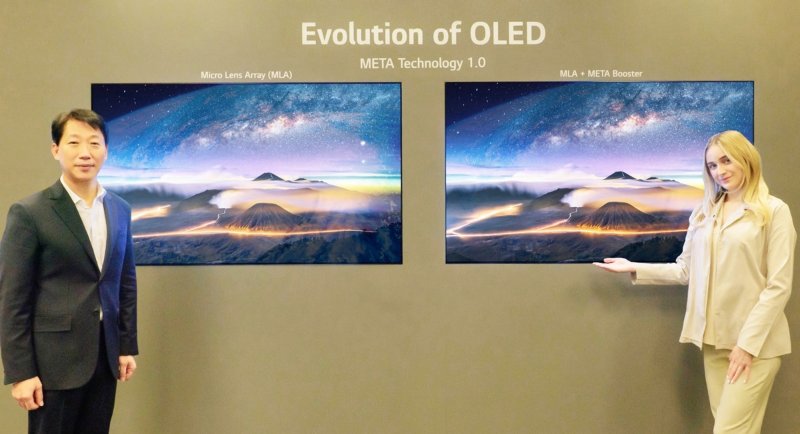
However, LG’s presentation did not focus only on the new models arriving on the market in the coming months, but also gave space to a unusual insight into the flaws of the competitor’s panels, more precisely those of the historical rival Samsung. If so far the clash has been held at a distance, with innovations and patents, despite the fact that the land on which the two giants stand is the same, LG has decided to attack directly with an open face with an intervention by an exponent of LG Display .
What was supposed to be a celebration of 10 years of OLED TV by LG has turned into a technical presentation, complete with data and graphs, of how the new MLA technology of the G3 panels presents an unparalleled superiority compared to Quantum Dot OLEDs by Samsung. The intervention was therefore not limited to praising the merits of the proprietary technology compared to the competition, but put the main defects of the bitter rival’s panels on the table for discussion, in particular by highlighting their lower longevity.
LG Display’s reasoning is based on laboratory tests that see a 25% drop in luminance in QD-OLEDs after 500 hours of use at 750 nits, which of course is not the case for LG panels. To complete the attack there is also “an accusation” towards Samsung to produce more blue light, harmful to eyesight for intensive sessions of use of the panels. However, this last statement does not find such a disastrous confirmation from the data reported by LG itself; in the graphs as proof of this statement, in fact, the gap appears rather limited between the two giants.
This analysis by LG Display leaves us somewhat dumbfounded, as listing the defects of a particular competitor to show one’s own superiority does not represent the elegance held up to now by Korean companies, whose blows and replies only took place with the presentation of models increasingly performing. While it is true that with the introduction of the white subpixel by LG, the workload generates less stress, it is equally true that to achieve a lower workload there is a need to add the aforementioned subpixel.
This introduction, in fact, was applied to compensate for the low brightness of the primary colors of LG Display, a problem that QD-OLED does not present. The note that instead was found with regard to the competition lies rather on the gray hues that Samsung technology presents in the presence of ambient light, a “problem” that will also affect the 2023 range unless there are revisions during the year.
Who will win? It is premature to express ourselves and we cannot hide that we definitely appreciated last year’s Samsung OLED TV, as our review of the S95B model strongly demonstrates, but on the other hand LG also continues to confirm its role and excellent value / price of its TV line, confirmed once again with last year’s model, the C2 that we have always reviewed on these pages. What is certain at the moment is that the fight for the best TV of 2023 has become decidedly more heated.
